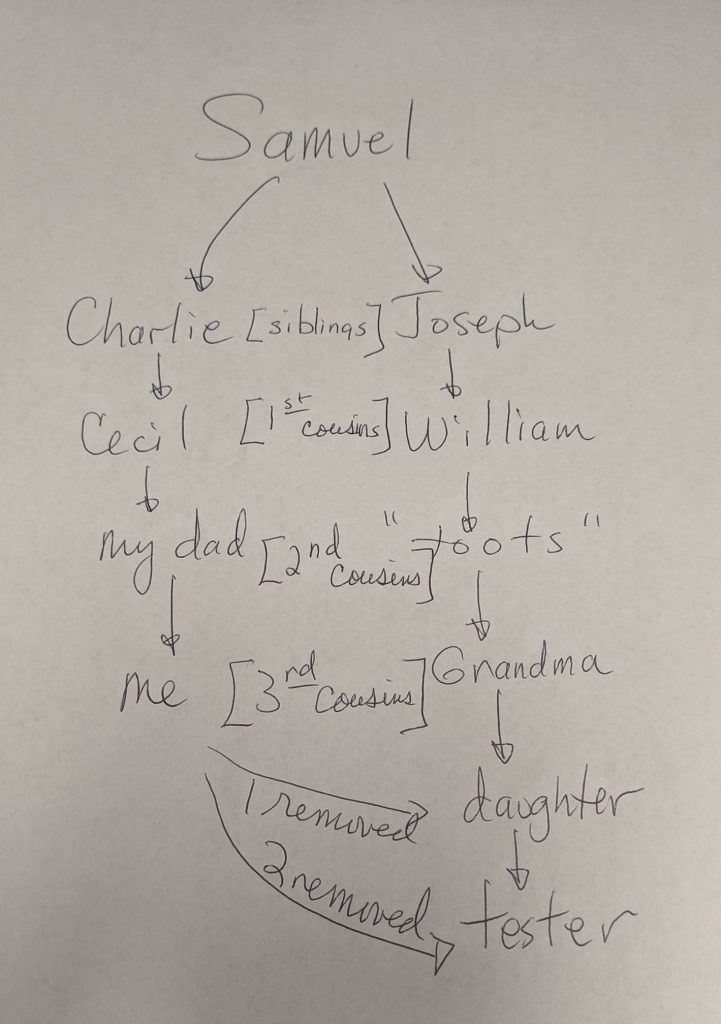We all get assumptions in our heads based upon our own experience. No matter how good we are at stripping preconceived notions away, there’s that occasional time when the hope and desire to make a discovery causes us to let our assumption filter down.

And there’s always the time when we forget that our personal family experience is not every family’s experience and may not even be the experience of all our ancestral families or all our relatives.
I’ve been continuing work on my DNA matches that appear to be connected to me through my two Irish immigrant ancestors (my great-great-grandparents). My hope is to find DNA matches that I share with other descendants of those Irish immigrants who are more distantly related to me than currently known descendants of those immigrants. Those more distant matches may be able to help me learn more about my Irish roots because the connection we share is a generation or more beyond the known information I have on my Irish ancestors. Such is the hope.
So I got excited about two matches. AncestryDNA predicted that they were between 4th and 6th cousins to me and that we share 32 and 26 cM of autosomal DNA at AncestryDNA. That suggested that they connected to me in a location in my pedigree earlier than my earliest known Irish ancestor–John Neill of Drumachose Parish, County Derry. Most of the known DNA matches to me through the Neill family are second or third great-grandchildren of this John Neill. I’m in the latter category.
The relationship predictor is an estimate. The relationship predictor does not include any prediction about “generations removed.” That removed notion is also a measure of the distance of our relationship.
After some online sleuthing, I determined how the matches with whom I share 32 and 26 cM of autosomal DNA are related to each other and to me. They weren’t connected through an earlier Neill ancestor before my John Neill. In fact they are descendants of my gg-grandfather–John’s son. The “problem” is that they are gggg-grandchildren of my gg-grandfather. They are two generations “removed” from me. In other words, their connection to our common ancestor is two generations further than my connection to that common ancestor. That’s why our relationship is so distant. These two cousins are (as of this writing) in their mid-to-late teens and were likely tested at the request of their grandmother, who is my third cousin (our great-grandfathers were brothers).
While I am well aware of how people reproduce and the ages at which that can happen, I got a little stuck in my own experience. My Neill grandfather and the Neill gg-grandfather of these two matches were first cousins born one year apart (1903 and 1904 respectively). My grandfather did not have children until his mid-to-late thirties. My own father did not have children until his later twenties. The gg-grandfather of these two matches started having children in his early twenties. In the case of my branch of the family, the generations were stretched over more time than in the other branch.
I also didn’t think these matches would be as young as they were. Their ages and the fact that they are two generations further than my connection to Samuel made it on the surface appear that our connection was probably further back than it was.
That’s why it is good not to make assumptions about how a DNA match connects to you. It is also good to remember that generational stretch can vary between different families.
But because of that generational stretch, it is advised to look and see if there are any living descendants of your problem ancestors who are more closely related to that ancestor than you are. If that’s the case, there’s a good probability that person has more of that problem ancestor’s DNA in their system than you do.

No responses yet